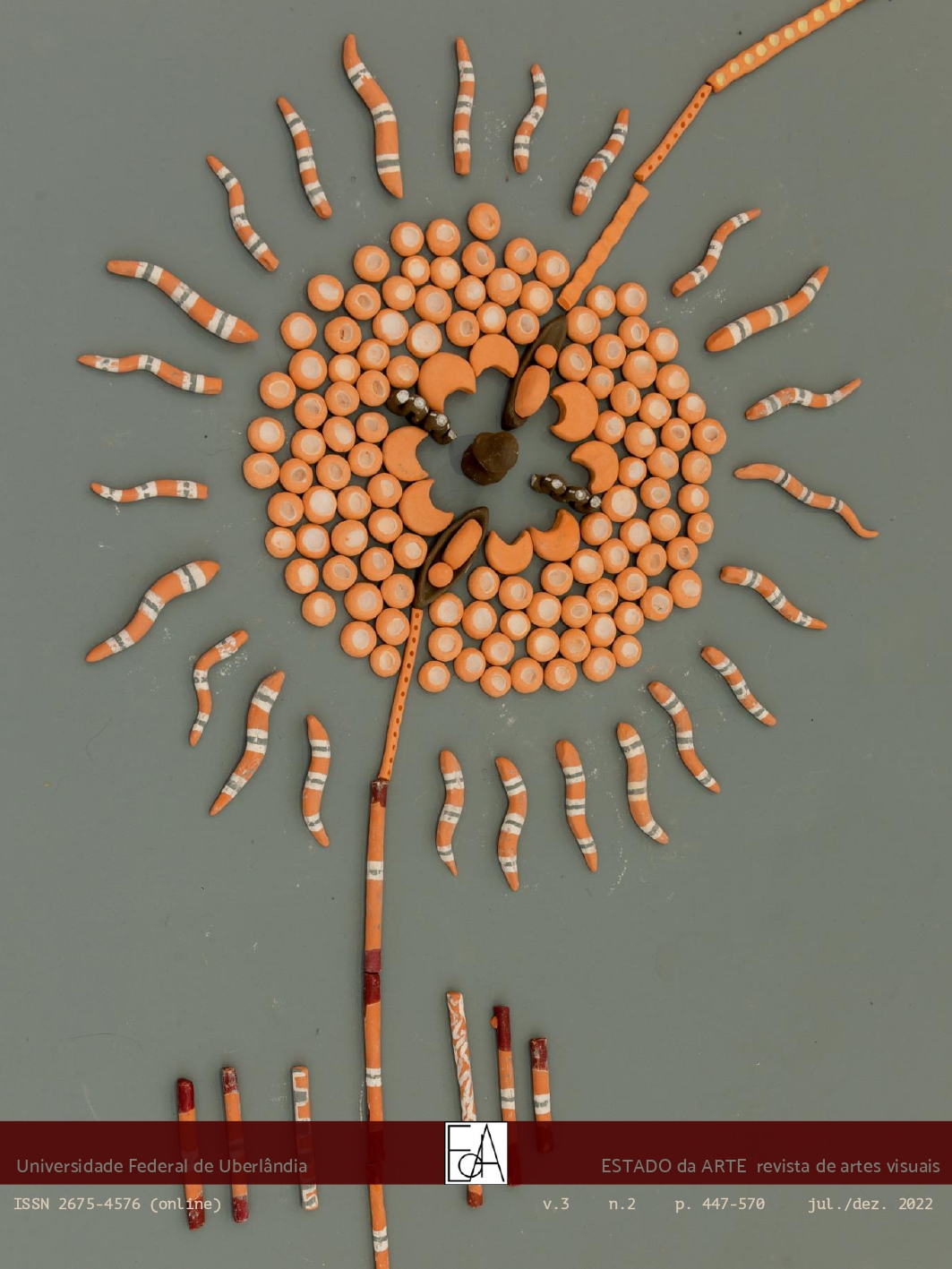Abstract
Indigenous artists have become increasingly known nationally by promoting a scene that Jaider Esbell calls "contemporary indigenous art". Museums, galleries and digital spaces have been demarcated by curators from different native peoples of Brazil to exhibit multifaceted productions. Two elders, in their daily activities, have contributed to strengthen this scenario: Sibé (Feliciano Lana/Desana) and Meriná (Bernaldina José Pedro/Macuxi). Both were victims of the death policy established in the country and worked with storytelling, drawing, singing and weaving. The aim of this article is to analyze the productions of these two connoisseurs of the knowledge of their communities, discussing how these works impact the field of contemporary indigenous art. The making of the old men and women reaffirms the millennial and ancestral existence of indigenous productions. For this purpose, the critique written by intellectuals of the native peoples is mainly resorted to. Thus, it is demonstrated that the contemporary indigenous art expression encompasses community elders and their practices are fundamental to the elaboration of works that are currently effervescent in art institutions.
References
BANIWA, Denilson. Uma Maloca-Museu para Feliciano Lana, o filho dos desenhos dos sonhos. In:_. Pinacoteca de São Paulo. Véxoa: nós sabemos/curadoria Naine Terena; textos de Daniel Munduruku (et. al.) - São Paulo: Pinacoteca do Estado, 2020, p. 145-150.
https://doi.org/10.29147/dat.v5i3.245
BARRETO, João Paulo; et al. As cores ʉmʉri masã no traçado das mãos de Feliciano Lana. Journal de la Société des américanistes, 30 dez. 2020. Disponível em: < https://www.ufam.edu.br/ultimas-noticias/1439-as-cores-m-ri-masa-no-trac-ado-das-ma-os-de-feliciano-lana.html >. Acesso em: 18 jan. 2022.
BERNALDINA. Saberes tradicionais com Bernaldina. Entrevista concedida a Pedro Stropasolas. Brasil de Fato, publicado em 29 nov. 2020. Disponível em: < https://www.youtube.com/watch?v=p5UcwBJelqU >. Acesso em: 20 jan. 2022.
DIAKARA, Jaime. Rio de Janeiro: o Lago de Leite. Selvagem: ciclo de estudos sobre a vida, 2021. Disponível em: < http://selvagemciclo.com.br/wp-content/uploads/2021/01/CADERNO14_JAIMEDIAKARA.pdf >. Acesso em: 18 jan. 2022.
ESBELL, Jaider. Entrevista concedida a Nina Vincent e Sergio Cohn. Sobre a arte indígena contemporânea. WERÁ, Kaká (Org.). Jaider Esbell. Rio de Janeiro: Beco do Azougue editorial. Coleção Tembetá, 2018, p. 17-57.
FIOROTTI, Devair Antônio e PEDRO, Bernaldina José. Cantos e encantos: Meriná eremukon. 1. ed. São Paulo: Patuá; Boa Vista: Wei, 2019.
FIOROTTI, Devair Antônio. Taren, eren e panton: poetnicidade oral Macuxi. Estudos de literatura brasileira contemporânea, n. 53, p. 101-127, jan./abr. 2018. Disponível em: < https://periodicos.unb.br/index.php/estudos/article/view/10261/9081 >. Acesso em: 20 jan. 2022.
https://doi.org/10.1590/2316-4018534
GLISSANT, Édouard. Poética da relação. Trad. Marcela Vieira. 1 ed., Rio de Janeiro: Bazar do Tempo, 2021.
KRENAK, Ailton. Entrevistas e palestras. In:_. WERÁ, Kaká (Org.). Ailton Krenak. Rio de Janeiro, Beco do Azougue editorial. Coleção Tembetá, 2017.
MACHADO, Ananda; PINHO, Rachel. As sementes enquanto patrimônio cultural e a feira de sementes dos povos indígenas de Roraima. Anais da VI Reunião de Antropologia da Ciência e Tecnologia, 2017, p. 59-78.
MENENDEZ, Larissa. Iconografias do invisível: a arte de Feliciano e Luís Lana. São Paulo: Annablume, Fapesb, 2009.
MENENDEZ, Larissa. Homenagem à Feliciano Lana. PGCult UFMA (01:44:18), publicado em: 26 jan. 2021. Disponível em: < https://www.youtube.com/watch?v=v_q9XnYIBfM >. Acesso em: 22 jan. 2022
MINISTÉRIO DA SAÚDE. Sobre a doença. O que é COVID-19. Ministério da Saúde. Disponível em: < https://www.gov.br/saude/pt-br/coronavirus/o-que-e-o-coronavirus#:~:text=A%20Covid%2D19%20%C3%A9%20uma,transmissibilidade%20e%20de%20distribui%C3%A7%C3%A3o%20global >. Acesso em: 24 jan. 2022.
PÃRÕKUMU, Umusi; KEHIRI, Toramu. Antes o mundo não existia: Mitologia Desana-Kehiripõrã. Ilustrações: Toramu Kehiri. 3 ed. rev. e ampl. Rio de Janeiro: Dantes Ed., 2019.
RIBEIRO, Berta. A mitologia pictórica dos Desâna. In:_. VIDAL, Lux. Grafismo indígena. 2 ed., São Paulo: Studio Nobel: FAPESP: Editora da Universidade de São Paulo, 2000, p. 35-52.
SANTA RITA, Flávia. Transculturalização: música, educação e Valorização da cultura indígena macuxi, a partir da “Banda Cruviana” da UFRR. Universidade Federal de Roraima. Disponível em: < https://uerr.edu.br/ppge/wp-content/uploads/2018/06/DISSERTA%C3%87%C3%83O-FL%C3%81VIA_%C3%81VILA_SANTA_RITA.pdf >. Acesso em: 18 jan. 2022.
TAYLOR, Diana. O arquivo e o repertório: performance e memória cultural nas Américas. Trad. Eliane Reis. Belo Horizonte: Editora UFMG, 2013.
YBY FESTIVAL. Vó Bernaldina Makuxi no YBY Festival 2019. Yby Festival (00:11:46), publicado: 25 jun. 2020. Disponível em: < https://www.youtube.com/watch?v=A5sfLav7eF0&t=454s >. Acesso em: 22 jan. 2022.


